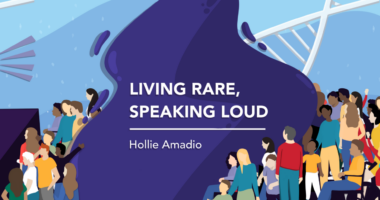9 of 10 HAE patients attack free with NTLA-2002, gene-editing therapy
Phase 1/2 trial now enrolling new patient group, testing 2 doses against placebo

Over the months after a single treatment with the experimental gene-editing therapy NTLA-2002, nine of 10 people with hereditary angioedema (HAE) in a Phase 1/2 trial have been free from swelling attacks.
Three patients with high pretreatment attack rates, ranging from 4.4 to 16.8 each month, have gone without an attack through the latest follow-up, Intellia Therapeutics, NTLA-2002’s developer, reported in an interim update on the trial.
These new data were presented at the European Academy of Allergy and Clinical Immunology (EAACI) Hybrid Congress 2023, held virtually and in Germany earlier this month. Findings were in the poster “Updated Safety and Efficacy of NTLA-2002, a CRISPR/CAS9-based Gene Editing Therapy Targeting KLKB1, in a Phase 1 Study of Patients with Hereditary Angioedema,” and discussed in a company webcast.
“After a single dose of our investigational CRISPR-based therapy, patients living with hereditary angioedema experienced durable elimination of their attacks,” John Leonard, MD, president and CEO of Intellia, said in a company press release.
No attacks in earliest-dosed patient group for about a year or longer
“We are thrilled to see that the earliest-dosed patients are attack free for approximately a year or longer, with NTLA-2002 demonstrating a very favorable safety profile. These remarkable attack rate reductions have been consistent, even in patients with the most severe symptoms,” he added, noting the therapy could be “a potential functional cure.”
NTLA-2002, which uses the CRISPR/Cas-9 gene-editing system, is designed to disrupt the activity of the KLKB1 gene, which provides instructions for making a precursor of the protein kallikrein. By disrupting KLKB1, NTLA-2002 aims to reduce the levels and activity of kallikrein, thereby also lowering the levels of bradykinin, a signaling molecule whose production is controlled by kallikrein. In HAE, swelling attacks are driven by elevated levels of bradykinin.
Intellia is testing the therapy in a Phase 1/2 clinical trial (NCT05120830). Its Phase 2 portion, testing two doses of NTLA-2002 against a placebo, recently began dosing participants. Enrollment is ongoing at sites in the U.K., New Zealand, and the Netherlands, with additional sites expected to open in France and in the U.S.
In the trial’s Phase 1 portion, 10 people with HAE were given a single infusion of NTLA-2002 at doses of 25, 50, or 75 mg.
Previous data from the study showed the therapy was generally well tolerated, with no serious side effects reported. The most common side effects were infusion reactions or fatigue around the time of infusion, which generally resolved within a day or two. No new safety issues have been identified with long-term follow-up.
As of the most recent data cutoff, the three patients given the 25 mg dose of NTLA-2002 have been followed for 48 weeks (nearly a year). At the latest follow-up, their mean kallikrein levels were 67% lower than they had been prior to gene therapy treatment.
Among patients given the highest dose of 75 mg, mean kallikrein levels dropped by 95% at 32 weeks of follow-up.
Hereditary angioedema gene-editing therapy seen as ‘potential functional cure’
In total, nine of the 10 patients have experienced a reduction in kallikrein levels of at least 60% — which, according to Intellia, is the threshold expected to provide a therapeutic benefit for patients. Not counting the initial 16 weeks (about four months) after dosing, during which the therapy was starting to take effect, all nine patients have been attack-free as of the latest follow-up.
Six people had been on long-term prophylactic (preventive) treatment when they were dosed with NTLA-2002. All six since have stopped using prophylaxis, without any new swelling attacks.
The only patient who did not have a kallikrein reduction of at least 60% was treated at the lowest tested dose (25 mg). This person was free of swelling attacks for more than a year following the single-dose treatment, but then experienced a mild attack of hand swelling caused by a sports injury. This attack did not require medical attention, and the patient has not experienced any further attacks as of the latest follow-up.
Among all these patients, the mean monthly attack rate decreased by 95% at the latest follow-up.
“While early, these unprecedented interim data from the Phase 1 study continue to reinforce our belief that NTLA-2002 could be a potential functional cure for people with hereditary angioedema,” Leonard said. “In addition, these data strengthen our view that NTLA-2002 could address the significant treatment burden that exists, despite currently available, chronically administered therapies.”






